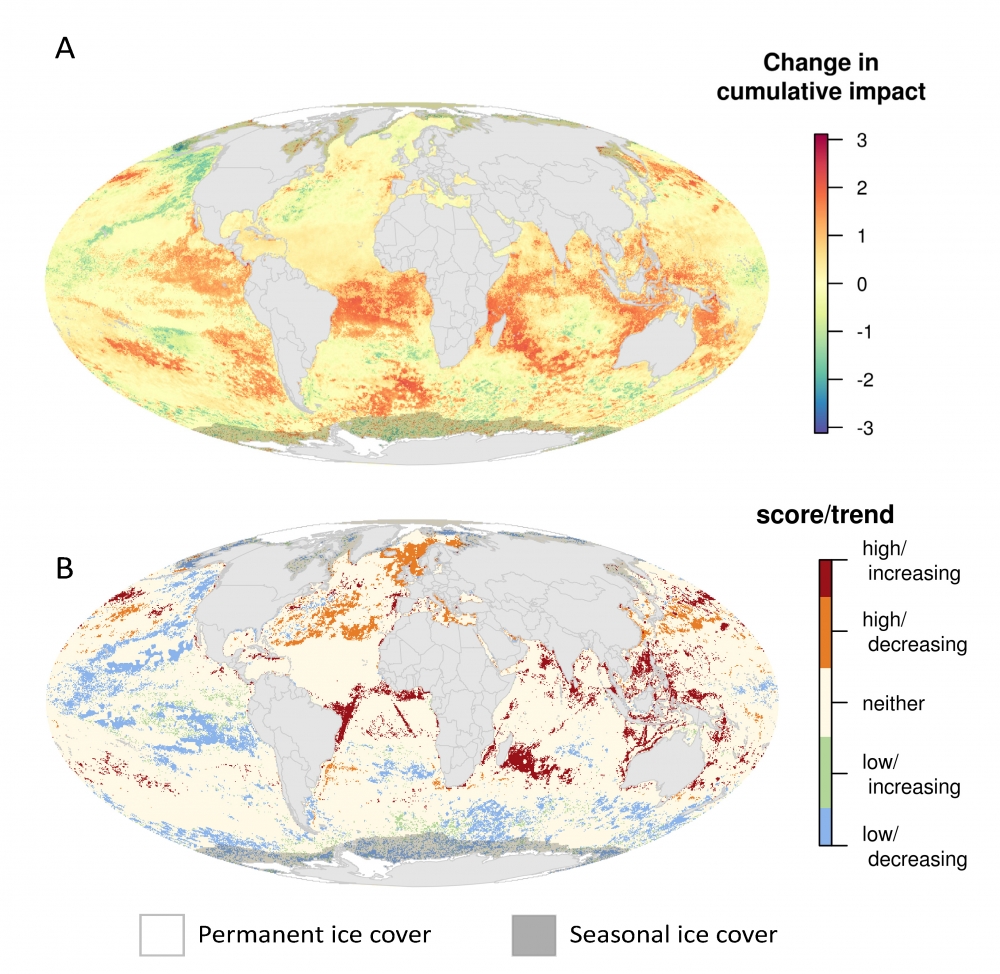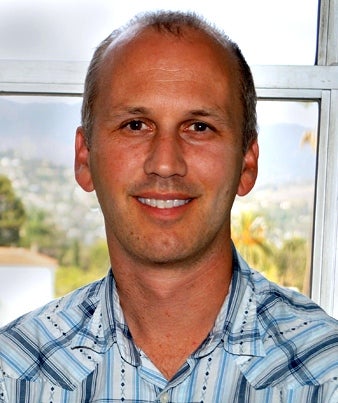
Humans’ Rising Impact on the Oceans

Human impacts on the oceans have increased in more than two-thirds of the world during the past five years. Some areas remain lightly impacted; others are improving.
In a new paper co-authored by Ben Halpern, a professor in UCSB’s Bren School of Environmental Science & Management, went after more detail, specifically trying describe an “important spatial component to our understanding of trends in ocean condition.” The scientists identified specific areas that are experiencing the greatest increase in impacts and what kinds of factors are causing the changes. The findings appear in the journal Nature Communications.
The investigators calculated and mapped five years of global change in cumulative impacts to marine ecosystems for 19 different types of human stressors and 20 types of global marine ecosystems. The stressors fall into four main categories: climate change (including ultraviolet radiation, ocean acidification and sea-level rise); commercial fishing; land-based pollution; and shipping activities plus oil and gas development.
“The power of this approach is that it’s a flexible, multi-faceted tool that can be applied to many questions,” said Halpern, who is a resident scientist at UCSB’s National Center for Ecological Analysis and Synthesis (NCEAS) where the study was conducted. “You can identify the largest stressor in an area and which actions decrease it the most, and you can start to identify which stressors should get the most attention.”
The scientists found that nearly 66 percent of the ocean and 77 percent of the ocean within national jurisdictions showed increased human impact over the five-year study period, driven mostly by climate change pressures. Only 13 percent of the ocean within national boundaries was unchanged or experienced decreasing impacts. In addition, Approximately 5 percent of the ocean has been heavily impacted, facing increasing pressures, while 10 percent has experienced low impact to date as well as decreasing pressures.
The group identified four main trends in ocean areas lying both within and beyond national jurisdictions.
1. Areas that have the highest impact and also the highest increase in impact, a condition that sounds the alarm for immediate management action.
2. Areas that have the highest impact but also the greatest decrease in impact, perhaps suggesting a management success story.
3. Areas that have the lowest impact but the highest increase in impact, indicating the need for immediate action to prevent losing a pristine area.
4. Areas of lowest impact that also have the lowest increase in impact, which may require either no action or preemptive action to maintain that favorable situation.
“If pressure is coming from climate change, there’s much less you can do locally; you need national policy or an international agreement,” Halperin said. “But if the impact is from shipping, you can move shipping lanes. If the impacts are from fishing pressure, we have a well-developed set of tools to deal with that at a local or regional scale. We are coming back to this after five years because it’s such a powerful tool, not just for answering questions about impacts, but also for informing and guiding policy and management decisions at any scale from local to global.”
Elizabeth Selig of Conservation International, a partner on the project, said: “Our work illustrates how greatly human impacts in the oceans may vary are across space and time. The framework that we use and our results can help to identify where management is needed and where it has been successful. Those are critical inputs for planning better stewardship of our ocean resources.”
“As the scope of global change increases, frameworks like ours that rapidly collect, visualize and track where and how those changes are impacting ecosystems will become central to prioritizing policy and conservation actions,” added co-author Kim Selkoe, who is affiliated with UCSB's NCEAS and the Hawaii Institute of Marine Biology.
The project was a five-year follow-up to its high-impact forerunner, which has been cited extensively and influenced marine resource management around the world. The method has become integral to the European Union’s approach to assessing ocean resources.
Halpern said that, given the steady stream of bad news about the health of the world’s oceans, the researchers were surprised at some of the bright spots.
“Based on the news and science we read daily about global patterns of human activity, we kind of assumed everything would be getting worse,” he said. “But we found that there are places where the pressures are stable or decreasing. Also, while some climate change impacts are getting worse globally, at the regional scale some places are seeing a reduced impact of climate change.”



